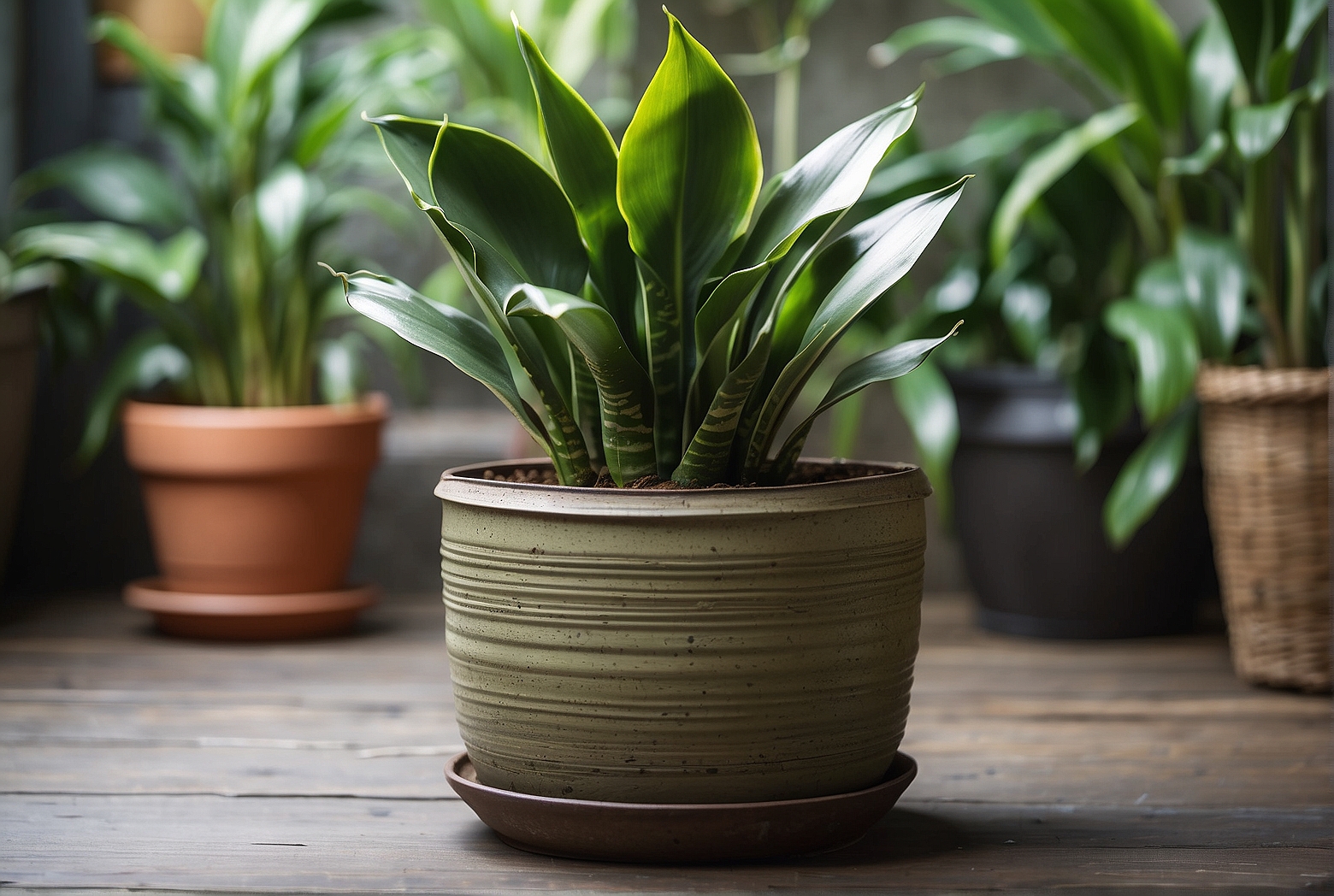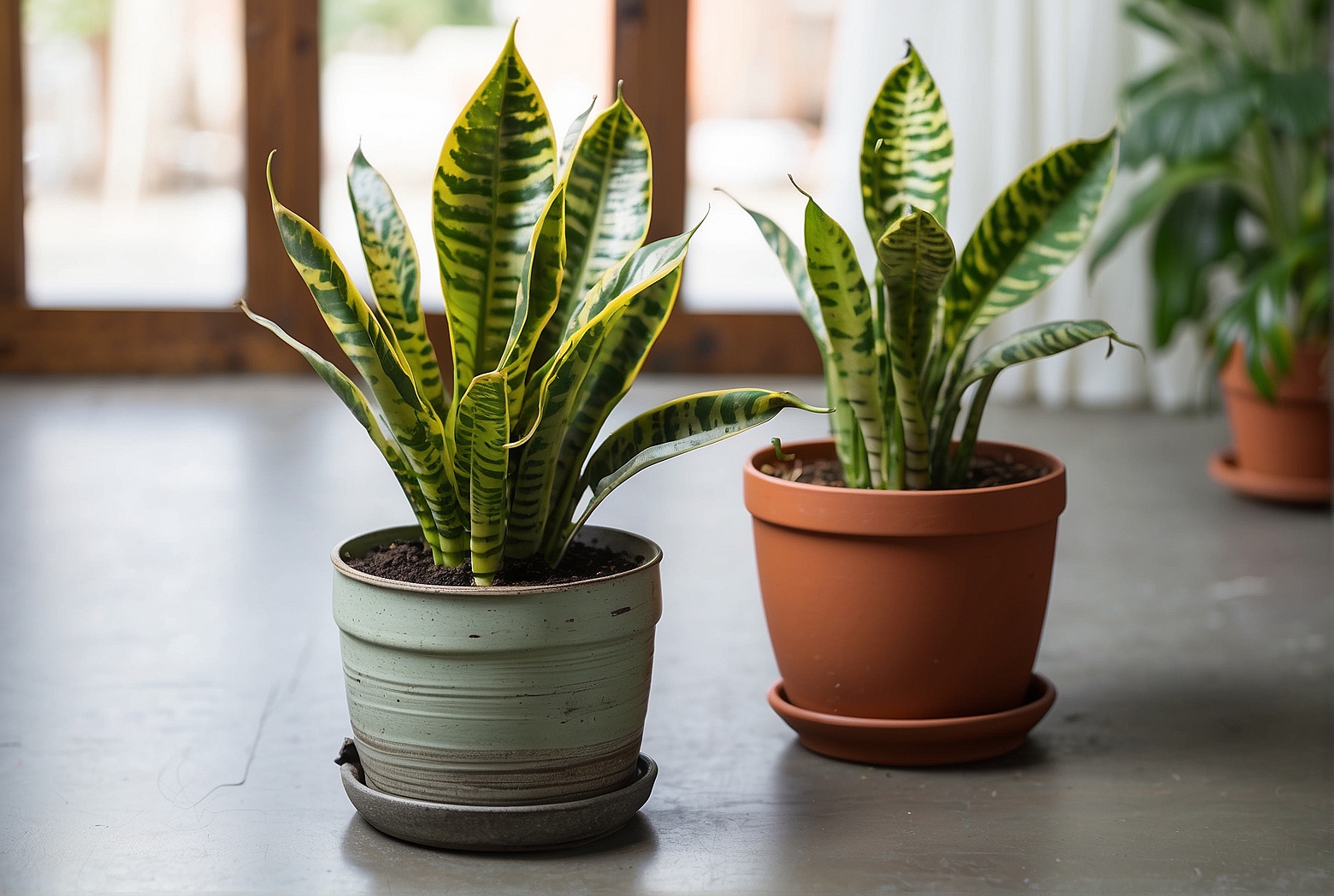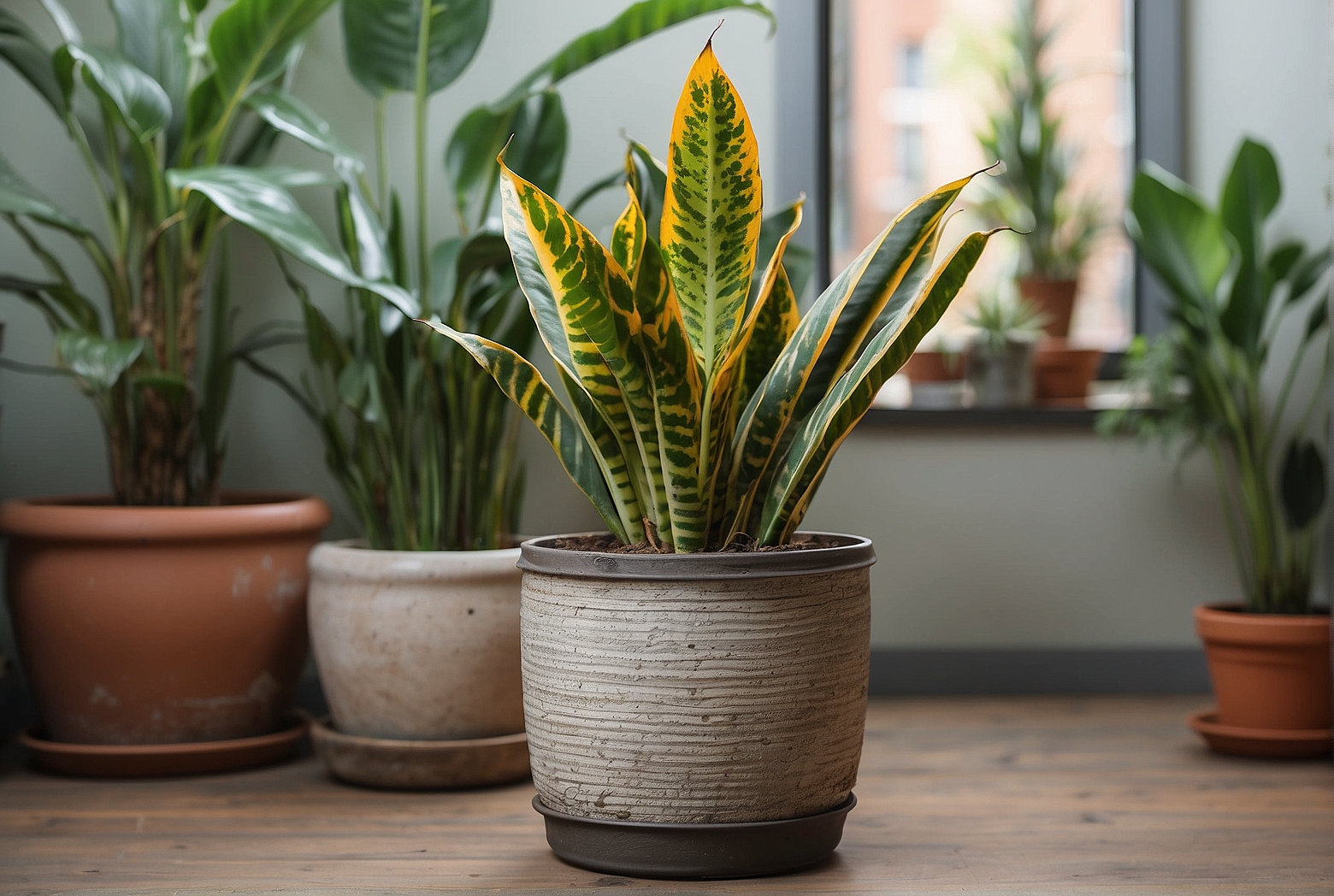Last Updated on April 19, 2024 by Tony Manhart
Did you know that the beloved snake plant, with its striking long, sword-shaped leaves, has been a popular choice among indoor plant enthusiasts for its ability to purify the air? But have you ever wondered if this seemingly harmless plant could pose a threat to your furry friends or curious children? In this article, we will explore whether the snake plant is indeed poisonous and what precautions you should take to ensure the safety of your loved ones. So, sit back, relax, and let’s unravel the mystery behind the snake plant’s toxicity.
Overview of Snake Plant
The snake plant, also known as Sansevieria or mother-in-law’s tongue, is a popular and easy-to-care-for houseplant. It is native to West Africa and is characterized by its long, upright leaves that resemble the shape of a snake. The plant is admired for its ability to thrive in low light conditions and its air-purifying properties. While the snake plant is generally considered safe to have in your home, there have been concerns about its toxicity, especially for pets and children. In this article, we will explore the truth behind these concerns and provide safety recommendations for keeping snake plants in your household.
Description of Snake Plant
The snake plant is a perennial succulent with thick, fleshy leaves that can grow up to several feet in height. The leaves are typically variegated, displaying various shades of green with yellow or white stripes. They have a distinct sword-like shape that tapers towards the tip. The plant itself grows from a rhizome, a horizontal underground stem, and it produces clusters of small, fragrant flowers on tall stalks, although flowering is rare when kept indoors. Snake plants are slow-growing and low-maintenance, making them a popular choice for novice plant owners.
Common Names of Snake Plant
Besides snake plant, this species is known by several other common names, such as mother-in-law’s tongue, viper’s bowstring hemp, and Saint George’s sword. These names are derived from the plant’s appearance or legends associated with it. The name mother-in-law’s tongue refers to the sharpness and pointed shape of the leaves, which symbolizes the sharp tongue of an irritable mother-in-law. Viper’s bowstring hemp is in reference to the plant’s fibrous leaves, which are traditionally used to make bowstrings. Saint George’s sword is named after the legendary dragon-slayer Saint George because of the plant’s long, sword-like leaves.

Scientific Name of Snake Plant
The scientific name of the snake plant is Sansevieria. It belongs to the Asparagaceae family, which includes other well-known houseplants like the asparagus fern and the peace lily. There are about 70 different species of Sansevieria, with the most common one being Sansevieria trifasciata. This species is known for its variegated leaves and is widely cultivated as an indoor plant. The genus name Sansevieria honors Raimondo di Sangro, Prince of San Severo, an Italian patron of botany in the 18th century. The specific epithet trifasciata refers to the three bands or stripes commonly found on the leaves of this species.
Concerns about Snake Plant Toxicity
Rumors of Snake Plant Poisonous Nature
There have been several rumors circulating about the toxicity of snake plants, which have caused confusion and concern among plant enthusiasts. Some sources claim that snake plants are highly toxic and can cause serious harm if ingested, while others argue that they are completely harmless. To determine the truth, it is essential to examine scientific evidence and expert opinions.
Cats and Dogs and Snake Plant
When it comes to pets, snake plants are generally considered to be mildly toxic. The leaves of the plant contain saponins, which are naturally occurring compounds that can cause gastrointestinal upset if ingested in large quantities. However, the toxicity level of snake plants is relatively low, and most animals would need to consume a considerable amount of leaves to develop any significant symptoms. It is important to note that some animals may have sensitivities or allergies to certain plants, so it is always best to monitor your pets closely and seek veterinary advice if you suspect they have ingested a toxic plant.
Children and Snake Plant
While snake plants are generally safe to have around children, precautions should still be taken to ensure their well-being. Just like with pets, young children have a curious nature and may be tempted to explore and taste their surroundings. While the toxicity of snake plants to humans is generally low, it is best to discourage children from nibbling on any plant leaves to avoid any potential reactions or discomfort. Educating children about the difference between safe and unsafe plants can also be beneficial.

Snake Plant and Pets
Effects of Snake Plant Ingestion on Pets
If a pet ingests parts of the snake plant, they may experience mild gastrointestinal symptoms such as drooling, vomiting, diarrhea, or loss of appetite. These symptoms are generally self-limiting and usually resolve within a couple of days. In rare cases, if large quantities of the plant are consumed or if the pet has an underlying health condition, more severe symptoms such as lethargy or difficulty breathing may occur. If you suspect that your pet has ingested a significant amount of a toxic plant, it is recommended to contact your veterinarian for further guidance.
Precautions to Take with Pets around Snake Plant
To minimize the risk of your pets coming into contact with the snake plant or other potentially toxic plants, there are some precautions you can take. Firstly, consider placing the plant in an area that is out of reach for pets, such as on a high shelf or in a hanging planter. Alternatively, you can create a barrier around the plant using baby gates or decorative fencing. Additionally, providing pets with alternative chewing toys and stimulating their environment with non-toxic plants can also help discourage them from nibbling on potentially harmful vegetation.
Snake Plant and Children
Potential Risks for Children
While snake plants are generally considered safe for children, there are still some potential risks that should be taken into consideration. The leaves of the snake plant contain saponins, which, although not highly toxic, can cause mild digestive distress if ingested in large quantities. Children, especially toddlers, tend to explore their surroundings and may be tempted to chew on or taste plants. Ingestion of plant material, although rare, may cause stomach upset, nausea, or vomiting in children. Therefore, it is important to keep an eye on young children and teach them not to put plant leaves in their mouth.
Safety Measures for Children
To ensure the safety of children around snake plants, there are some simple safety measures that can be implemented. Keep the plant out of reach of young children by placing it on a high shelf or in an area that is inaccessible to them. Educate children about plants and explain to them that some plants are safe to touch and enjoy, while others should not be put in the mouth. Teaching children about plant identification and reinforcing good habits, such as washing hands after touching plants, can also contribute to their overall safety.
Understanding Snake Plant Toxin
Presence of Toxins in Snake Plant
The snake plant contains various toxins, albeit in small amounts. One of the primary toxins present in snake plants is saponins. Saponins are naturally occurring compounds found in many plant species and have detergent-like properties. In nature, these compounds serve as a defense mechanism against herbivores. While the concentration of saponins in snake plants is not high enough to cause severe toxicity, it can still lead to mild gastrointestinal irritation if ingested in significant quantities.
Type of Toxins in Snake Plant
Aside from saponins, snake plants also contain other compounds that may contribute to their mild toxicity. These include alkaloids, phenolic acids, and small amounts of calcium oxalate crystals. These compounds, although present in low concentrations, can cause irritation or discomfort if ingested. However, it is important to remember that the toxicity level of snake plants is generally low, and severe reactions are rare. With proper precautions and responsible plant care, the risks associated with snake plant toxicity can be effectively minimized.
Symptoms of Snake Plant Poisoning
Signs and Symptoms in Pets
If a pet ingests a significant amount of snake plant, they may exhibit various signs and symptoms of poisoning. These can include drooling, vomiting, diarrhea, loss of appetite, lethargy, or, in rare cases, difficulty breathing. It is important to note that these symptoms can also be indicative of other health issues, so it is crucial to consult with a veterinarian for a proper diagnosis and treatment plan.
Signs and Symptoms in Children
In children, the symptoms of snake plant poisoning are similar to those in pets. Ingestion of a large quantity of the plant can lead to mild gastrointestinal distress such as stomach upset, nausea, or vomiting. These symptoms are generally self-limiting and improve with time. If more severe symptoms occur, such as difficulty breathing or persistent stomach pain, it is advisable to seek medical attention immediately.
Handling Snake Plant
Protective Measures when Handling Snake Plant
While snake plants are generally safe to handle, it is still advisable to take some protective measures to avoid potential skin irritations or allergies. When handling the plant or performing any maintenance tasks, such as repotting or pruning, it is recommended to wear gloves to protect your skin. Some individuals may be sensitive to the sap of snake plants, which can cause skin irritation or allergies. By wearing gloves, you can minimize any potential adverse reactions and ensure a safe and enjoyable plant care experience.
Proper Care and Maintenance
To keep your snake plant healthy and thriving, it is essential to provide it with proper care and maintenance. Snake plants are quite resilient and can tolerate a range of light conditions, but they prefer bright, indirect light. Water the plant sparingly, allowing the soil to dry out between waterings to prevent overwatering and root rot. These plants are also tolerant of low humidity levels and can withstand periods of neglect, making them suitable for busy households or for beginners in the world of gardening. Simply dust the leaves occasionally to keep them clean, and your snake plant will reward you with its beautiful presence.
Snake Plant Benefits
Air Purification Abilities
One of the significant benefits of having a snake plant in your home is its air-purifying abilities. Snake plants are known for their capacity to remove toxins like formaldehyde, benzene, xylene, and trichloroethylene from the air. These compounds are commonly found in household items such as paint, furniture, and cleaning products. By absorbing and converting these harmful substances into oxygen, snake plants help improve indoor air quality and create a healthier living environment for you and your family.
Indoor Use Benefits
In addition to their air-purifying properties, snake plants offer various benefits that make them an excellent choice for indoor use. They are extremely low-maintenance plants, requiring minimal watering and attention. Their ability to thrive in low light conditions makes them suitable for rooms with limited sunlight. Snake plants also have a unique ability to convert carbon dioxide into oxygen at night, making them ideal for bedrooms where they can enhance the air quality while you sleep. Furthermore, with their stunning vertical growth and architectural presence, snake plants serve as attractive decorative elements and can complement any interior design style.
Alternative Non-Toxic Plants
Safe Plants for Pets and Children
If you have concerns about snake plant toxicity and want to explore alternative options, there are several non-toxic plants that are safe to have around pets and children. Houseplants such as spider plants (Chlorophytum comosum), Boston ferns (Nephrolepis exaltata), and areca palms (Dypsis lutescens) are great choices. These plants not only add beauty and greenery to your home but also provide various health benefits without posing significant risks to your loved ones.
Similar-Looking Alternatives to Snake Plant
If you love the appearance of snake plants but prefer a non-toxic option, there are similar-looking alternatives that you can consider. The ZZ plant (Zamioculcas zamiifolia) and the rubber plant (Ficus elastica) are two popular choices that have thick, glossy foliage and are non-toxic to pets and children. These plants offer a similar aesthetic appeal to snake plants while providing peace of mind regarding toxicity concerns.
Conclusion
In conclusion, while snake plants have been the subject of debates regarding their toxicity, they are generally considered to be safe for pets and children when handled responsibly. The mild level of toxicity in snake plants, primarily due to the presence of saponins, means that significant quantities would need to be ingested to cause severe harm. By following simple safety measures such as keeping the plant out of reach, educating children, and monitoring pets, you can enjoy the beauty of snake plants without worrying about potential toxicity risks. Remember, snake plants offer numerous benefits, including air purification and low-maintenance care, making them a fantastic addition to any home.
Tony Manhart is a passionate gardener who has been tending to gardens for over 20 years. He takes pride in creating beautiful outdoor spaces with plants, trees, and shrubs that can thrive in any environment. He loves to share his knowledge with others and has taught classes on gardening basics and advanced techniques. He is committed to sustainability, using natural and organic methods to create and maintain gardens. He also works with local organizations to create green spaces for communities. When he’s not gardening, Tony enjoys hiking, reading, and spending time with his family.


